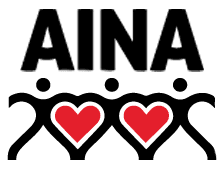AINA Children Home – The Village
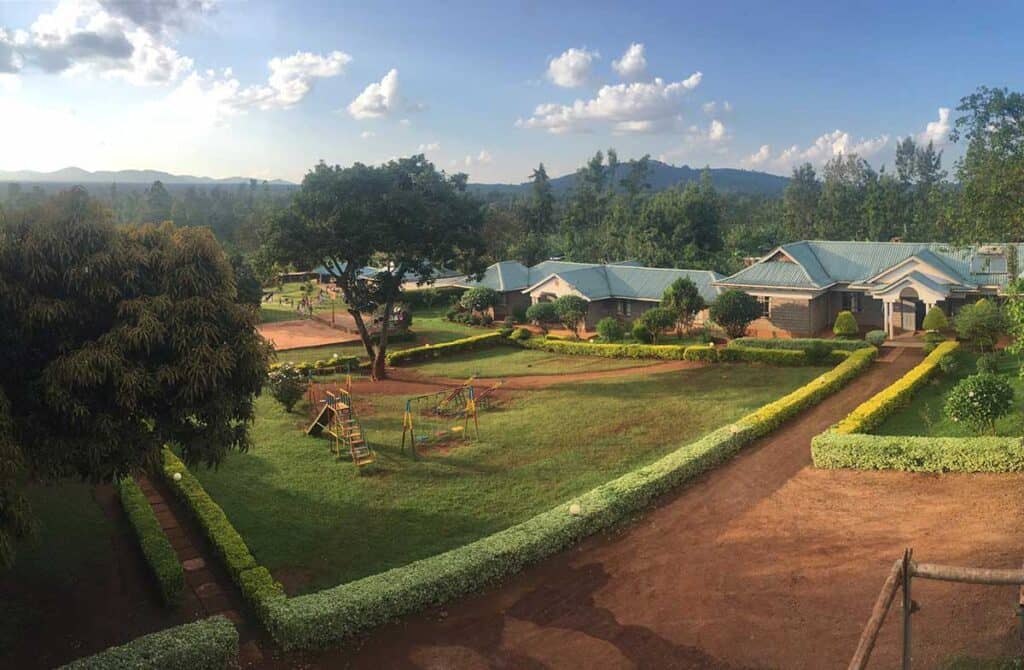
It was possible to give life to AINA’s Children’s Home in Nchiru, near Meru, thanks to friends and supporters that have been following our work right from the beginning, above all Il Fiore del Deserto and March To The Top.
The village (known locally as AINA Children’s Home) offers accommodation to 100 HIV positive children (boys and girls) in the age group 0-14. The village was opened in April 2010 after three years dedicated to the design and construction of the various buildings, to the recruitment of staff and to the weaving of contacts with the local community.
At the moment (March 2022), the village is home to 130 children.
Why this project
Since 1993 we had been working with sick and needy children in Igojii’s Sant’Anna hospital. In those days the hospital was entirely run by the Don Orione nuns: AINA, however, was running a specific service exclusively for children suffering from malnutrition. Children were offered not only medical attention, but also a protected area, in which they could play, study and socialize.
Over time, however, the problem posed by caring for HIV-positive children emerged in all its dramatic rebound: poor families which did not have the means to look after sick children abandoned them in front of the hospital’s gates; others, sometimes just slightly older and whose mothers had died during childbirth, were abandoned in a state of severe malnutrition. It was at that point that we decided not to continue offering a limited intervention, but – also thanks to the pressure of the local communities and the encouragement we received from our sponsors – we embarked on a wider project in order to offer to the children not only medical care and protection but also the possibility of imagining a future of health, well being and education.
This is the background in which lie the roots of AINA’s Children’s Home: we started fund raising in 2005, then we bought the land in Nchiru, we followed the various stages of the building project and – finally – managed to open the center in 2010.
Where are we
The climate is equatorial, with frequent rainy spells in November, April and May. The vegetation is lush: banana, mango, papaya and avocado trees grow along the dirt roads outside the village. Our neighbours are families from ‘Nchiru, often with many children: they are mainly peasants and farmers, sometimes small traders or shop keepers.
How is it organized
The shamba does not for the moment provide us with the possibility of total self sufficiency but we are trying to work towards this goal: a recent visit of an Italian agronomist made it possible to optimize some cultures and to begin the experimental cultivation of courgettes, broccoli and peas.
Up until now we have been growing cabbages, sukumawikis, carrots, corn, banana, mango, avocado and other traditional African vegetables and fruits. Although for the time being the shamba provides only 25% of the needs of the village, our long-term objective is to buy less and less outside…
In addition to the products of the kitchen garden, we have chickens, rabbits, goats and cows. Our six cows were recently traded for two better cows which can produce plenty of milk: we hope to be able to buy more cows soon, so as not to need to buy milk from the market. There is also a donkey who was extremely useful during the construction phase: he was and still is essential in order to draw up water from the stream when the water system has failed.
How does it work
The organization of the village, not unlike the organization of a large family or of a small town, is complex. Everyone has his/her own task, his/her area of responsibility: everyone is aware of the fact that the well being of the children lies right at the core of their work and their commitment.
The committee in charge of the project as a whole operates from Rome, but is in constant and close contact with the local responsible: Caterina Silvestri.
The children are in the caring hands of the “house mothers”: there are two for each house. They take care of the children as if they were their own: they sleep in the house with them, share meals, daily activities, outings, times for play and times for work. As they spend most of their time with the children they are usually the best people to realize when the nurse or the doctor have to be consulted. It is the house mothers who deal with the regular administration of antiretroviral therapy. Their training has been provided by the volunteers who took turns since the center opened.
A nurse lives in the village for four days a week and is in charge of the general health of the children: she decides when it is necessary to take them to the local hospitals of Tigana or Chogoria that are about ten miles away from the village .
The education of the younger children (nursery and kindergarten) is in the hands of the nursery teachers, while the older children regularly attend the local school. In addition, all children are offered the regular teaching of the catechism by the Diocese of Meru.
Thanks to Ripples International, a local charity, the older children are offered regular counselling aimed at making them aware of their disease and of how to manage it.
A small team of two cooks and a helper work in the kitchen: they prepare all meals for the children and the staff (all in all about 90 people for breakfast, lunch and dinner, apart from the mid-morning and mid-afternoon snacks for children ). They are also in charge of the shopping and of keeping the canteen and the kitchen tidy and in a good shape.
To complete the picture, there also about 8 shamba workers, quite a few cleaners, two guards (one for the day, Joseph, and one for the night, Samuel), a carpenter, a driver, Festus, who lives just outside the village and is always available to take the children to the hospital and the directors of the various departments to town or in the neighbourhood to deal with their tasks.
Life in the village
The younger children remain in the nursery and are looked after by the house mothers, their teacher and often by the volunteers. Their days follow the regular rythm of meals and play time.
At the age of three and up to the sixth grade, the children attend their school, the Paolo’s Academy, together with some local children. At half past five they wake up to get ready for the day. After taking the medicines, they go to have breakfast in the refectory. After they wash, tidy up the rooms and get dressed for school. By eight they are all in class. There is a break for lunch time and two short breaks in between. The school then continues until 3.15pm.
As for the children’s spare time, there is a garden to play in, a playground with slides and swings, a court for basketball and other ball games. The older children play the guitar and the drums, and often practice small dancing and singing performances. The small kids enjoy messing with earth and leaves, and at times argue for the use of the swing. After dark, the radio, the television and dvds cheer up and enliven the evening.
At half past seven, after bathing, the younger children are in bed. The older ones enjoy a few more hours of playtime. At ten o’clock the generator is turned off and there is no more light for anyone.
On Sunday everyone, from the youngest to the oldest, attend mass in the Church of St. Francis Children’s village. It takes about forty minutes to get there on foot but everyone enjoys this small expedition that occupies a good part of the morning. On other days, small outings involving small groups of children are organized.
Structures
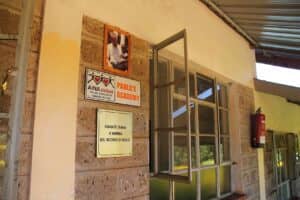 Culture is the most powerful weapon to win over discrimination, affirm the right to proper health, to social justice and to work – against any form of exploitation, old or new. With this reflection, A.I.N.A. and Fiore del Deserto have planned and realized the construction of a school inside the village “children of the Noon” , knowing that education and culture can fight poverty in all its facets.
Culture is the most powerful weapon to win over discrimination, affirm the right to proper health, to social justice and to work – against any form of exploitation, old or new. With this reflection, A.I.N.A. and Fiore del Deserto have planned and realized the construction of a school inside the village “children of the Noon” , knowing that education and culture can fight poverty in all its facets.
Therefore, in Summer 2012, what at the beginning of the life of the village seemed like an important yet far objective, had become- suddenly- became reality. In January 2013 the Paolo’s Academy Primary School has been inaugurated , in memory of Paolo Sbordoni Angelotti, a friend of A.I.N.A. that deeply loved this place.
Paolo’s Academy is a primary school, part of the Kenyan scholastic system recognized by the Ministry of Public Education. The body of teachers recruited is private and has been selected by a italo-Kenyan college. The scholastic education in Kenya is very structured; the programmes are defined by the Ministry of Education and the teachers follow college courses focused on teaching skills. The school is now made of a building that has 10 classrooms, a nursery, a secretary, a library a teachers’ room and the administrative offices.
The school year starts in January and ends in December, with two to three weeks of vacation every trimester; at the end of every trimester, the children take a general exam that is then graded. English, Kiswahili, Maths, Science, Religion and Social Studies, other than Music, P.E. are the subjects studied at school.
The daily timetable is very similar to the one of the other primary schools: classes start at 8.10 am and end at 3.10 pm. Each class lasts 45 minutes with two breaks of 10 minutes each. One at 9.30 am and one at 10.50 am for the tea. Lunch-break is from 12.45 am till 2 pm. Every Monday morning the school week is open with setting the flag followed by a brief meeting among the teachers, the children and the manager. Every Friday morning, another small ceremony closes the week. To improve the learning process and recover some missed time during the week, there are classes also on Saturday mornings.
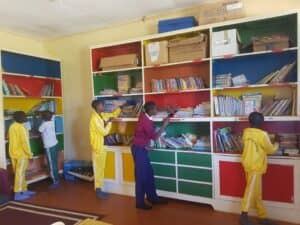 Inaugurated in 2013, the library is now located in a room of the administration office. It was created also thanks to the contribution of the St. George Institute of Rome and has collected 1500 books also thanks to a donation of 400 books.
Inaugurated in 2013, the library is now located in a room of the administration office. It was created also thanks to the contribution of the St. George Institute of Rome and has collected 1500 books also thanks to a donation of 400 books.
The school is extremely comfortable with rugs, colorful shelves and beautiful cushions, hung on the wall there are the “rules” of the library and every child is responsible for the utilization of each book. Carol, the secretary, also serves the role of librarian and the teachers use the library for both the computers and the books. The library stays open only under the control of our teachers and secretary.
Books are organized according to an online system called Library Thing that allows looking for a specific book depending on its theme. the greatest part of the books are in English, yet we are expanding the section of books written in Kiswahili.
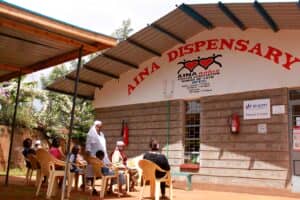 The building of the Clinic, where the construction work has started in February 2011, was inaugurated the 30th of June 2012, with a great participation of personalities coming from the surrounding communities. The building is made of a medical ambulatory, a dentist studio, a pharmacy and a laboratory.
The building of the Clinic, where the construction work has started in February 2011, was inaugurated the 30th of June 2012, with a great participation of personalities coming from the surrounding communities. The building is made of a medical ambulatory, a dentist studio, a pharmacy and a laboratory.
After that, we managed to provide the rooms with the appropriate furniture and the necessary appliances. Thus, to the dentist’s chair, we have added the radiological equipment centrifuge and in the laboratory, we have purchased a microscope, a centrifuge, a sterilizer, the equipment for the sterilizer and one for the chemical analysis. We have also obtained the authorization to operate from the district authorities as well as the ministerial ones.
The personnel that operates in the structure is currently made of two nurses, Catherine and Sister Alice, and of our laboratory technician and, from August 2014, by Doctor Harrison, thanks to a pact with the Sant Egidio Community for the project Dream (Drug Resource Enhancement against Aids and Malnutrition).
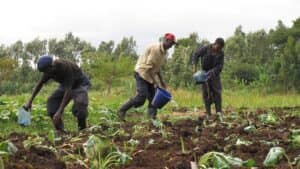
Inside the village, we have created “The Shamba”, a farm with the objective of making the village self-sufficient regarding the nutrition.
The Shamba spreads for 4 acres in the area surrounding the village, in a rented piece of land, where we cultivate cabbage, carrots, corn, and other typical african vegetables like Sukuma Wiki, crucial part of all the children’s meals. Inside the village, you can find plantations of Bananas, Mangoes, Avocados, Guava and Papayas that provide fruits all year long. The irrigation is provided by a stream and by the rainwater collected in tanks.
Crops still do not provide sufficient produce for the village’s autonomy, yet we are working on it, with new crops, so that we would not have to buy externally fruits and vegetables.
The other area of the shamba is the farm where we breed animals that, unlike the agricultural sector, manage to satisfy entirely the village’s needs. At the moment (Oct 2017), there are 4 cows that produce on average 50 liters of milk per day, 4 veals of which 3 males are destined for slaughter, we also have laying hens and many pigs that provide enough meat for the village and that we periodically sell outside. The farm has been reorganized lately by a young engineer that has expanded, renovated and organized the henhouse and also the pigsty, allowing the inclusion of new animals without recruiting new personnel.
Moreover, we have started a new project for functional beekeeping, due to the need of increasing the nutritional contribution of the HIV-positive children through the production of honey.
Thanks to the volunteers, we have started a training program for the shamba’s farmers regarding the techniques of the functional beekeeping and with the installation of a small apiary, yet the training has been expanded also to the local farmers of the fields nearby.
Indeed, the positive outcome of the project is strictly bonded to the capacity of training new local beekeepers to the techniques of functional beekeeping and to sustain and promote natural cultivations avoiding the utilization of pesticides and herbicides that are the main cause of the bees’ disappearing, creating the major difficulty in starting the apiary.
In the long term
In the long term, we certainly must continue to work for the future of these children, so that they can be independent adults. We are beginning to think and explore ideas about vocational workshops, professional training, micro-credit for small commercial projects. We hope that our supporters will continue to help us and encourage us to persevere down this road…
